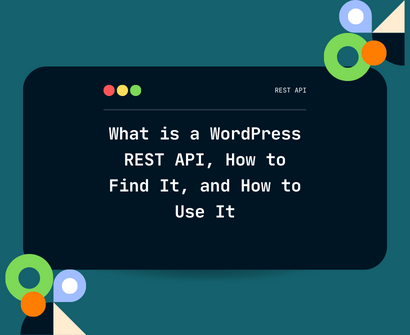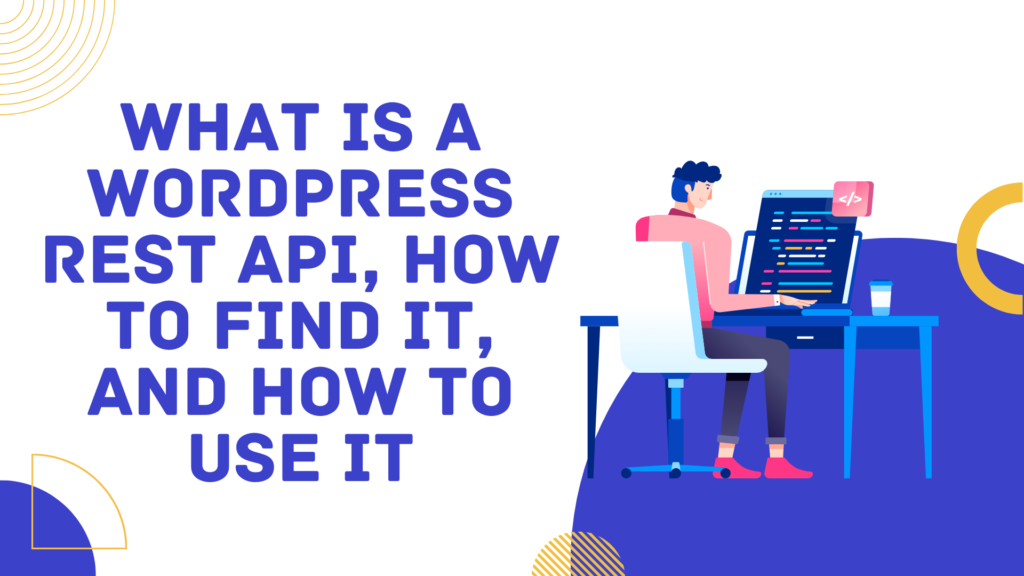

The WordPress REST API is one of the most important developments in the WordPress world. It’s a strong tool that allows developers to work with WordPress data in previously unthinkable ways. In this article the WordPress REST API will be explained, its location will be looked into, and its useful applications will be examined. So fasten your seatbelts as we set out on a quest to realize this tool’s full potential.
Chapter 1: What Is WordPress REST API?
Let’s start with the fundamentals before delving into the specifics of locating and utilizing the WordPress REST API. What is it exactly?
Representational State Transfer Application Programming Interface, or REST API, is an essential component that allows various software programs to communicate with WordPress. It essentially serves as a conduit for information to be exchanged between WordPress and other platforms in a structured and effective way.
One of the key principles behind the REST API is that it uses standard HTTP methods, such as GET, POST, PUT, and DELETE, to perform actions on WordPress data. This makes it incredibly versatile and easy to work with.
Chapter 2: Finding the WordPress REST API
Let’s investigate how to locate the WordPress REST API within your WordPress installation now that we have a better understanding of the idea behind it.
- Check Your WordPress Version: The REST API was gradually integrated into WordPress, with core support starting from version 4.4. So, the first step is to ensure you are using a version of WordPress that includes REST API functionality.
- Permalinks Settings: Make sure your permalinks settings are configured correctly. The REST API relies heavily on clean and structured URLs. To do this, navigate to your WordPress dashboard, go to “Settings” -> “Permalinks,” and choose a suitable structure.
- API Endpoints: WordPress REST API endpoints are the specific URLs where data can be accessed. By default, the API endpoints are structured as follows:
- Posts:
/wp-json/wp/v2/posts - Pages:
/wp-json/wp/v2/pages - Users:
/wp-json/wp/v2/users
- Posts:
- Authentication: Depending on your use case, you might need to set up authentication for the REST API. Authentication ensures that only authorized users or systems can interact with your WordPress data. There are various authentication methods available, including OAuth, JWT (JSON Web Tokens), and basic authentication.
Chapter 3: Using the WordPress REST API
Now that you’ve located the WordPress REST API, let’s explore some practical ways to use it.
- Fetching Data: The most common use of the REST API is retrieving data from your WordPress site. You can do this by making a GET request to the desired endpoint. For example, to fetch a list of posts, you can use a URL like
https://yourwordpresssite.com/wp-json/wp/v2/posts. - Creating and Updating Content: The REST API also allows you to create and update content on your WordPress site programmatically. You can use POST and PUT requests to accomplish this. For instance, to create a new post, you would send a POST request to
/wp-json/wp/v2/posts. - Authentication and Security: As mentioned earlier, securing your REST API is crucial. Depending on your needs, you can implement various authentication mechanisms. OAuth is a robust choice for applications that require user authentication, while basic authentication can be used for simpler scenarios.
- Custom Endpoints: WordPress also enables you to create custom REST API endpoints tailored to your specific requirements. This is particularly useful when you need to expose custom post types or data from plugins. Custom endpoints can be registered using WordPress hooks and filters.
- Theming and Front-End Integration: Developers often use the REST API to build dynamic and interactive front-end applications. This is achieved by fetching data from WordPress via API requests and rendering it using JavaScript frameworks like React, Angular, or Vue.js.
Chapter 4: Real-World Applications
Let’s look at some practical uses for the WordPress REST API now that you have a firm understanding of the basics and best practices.
- Headless WordPress: A popular trend is using WordPress as a headless CMS. In this setup, WordPress manages content, while a separate front-end application consumes the data via the REST API. This approach offers more flexibility and faster load times.
- Mobile Apps: Developers often use the REST API to power mobile apps. Whether you’re building an iOS, Android, or cross-platform app, the API allows you to fetch and display WordPress content seamlessly.
- E-commerce Integration: For e-commerce websites, the REST API is invaluable. It enables you to integrate your WordPress site with popular e-commerce platforms, manage products, and process orders programmatically.
- Data Migration: When migrating content from one WordPress site to another, the REST API simplifies the process. You can export data from the source site and import it into the destination site using API requests.
Summary
The WordPress REST API, in conclusion, is a strong tool that allows developers to interact with WordPress in ways that were previously thought to be impractical. You can use its potential to develop dynamic websites, apps, and more by grasping its principles, locating it within your WordPress installation, and following best practices. Keep in mind that the WordPress REST API is useful for a variety of projects as you begin your journey with it. Exploring this technology can expand your options and up your web development game.
